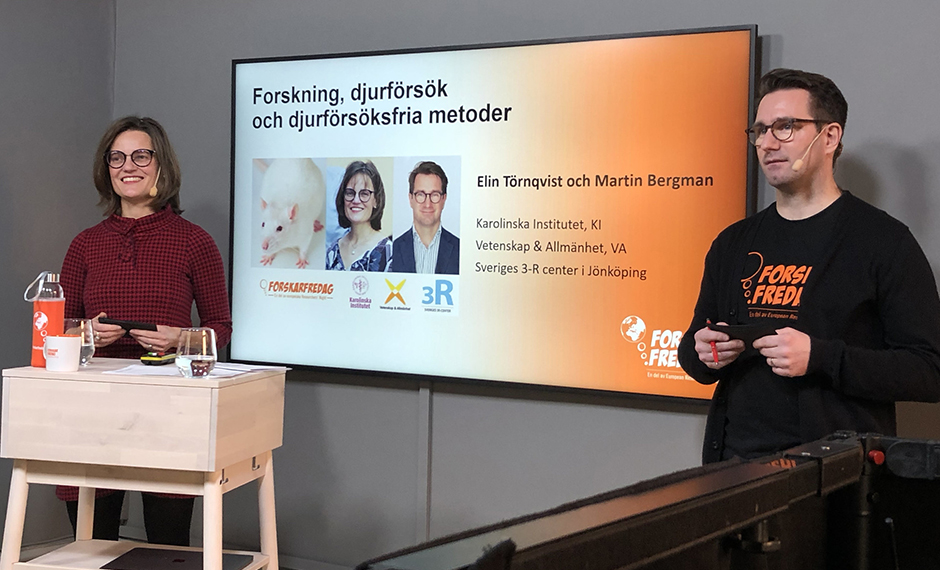Test on fruits and plants! Use new technology and artificial intelligence! Which animals are most common in testing and do we test make-up on animals? The questions and reflections were many when we met high school students at Researcher’s Night – ForskarFredag in Swedish.

The ideas and questions were many when Elin Törnqvist, veterinarian and researcher from Karolinska Institutet and member of the Swedish National Committee, met high school students on this year’s ForskarFredag. As the event was virtual, five classes from different parts of the country could participate at the same day.
The theme of the talk was animal experiments and non-animal methods. The event was organized by the Swedish 3Rs Center together with Vetenskap & Allmänhet, which also coordinates ForskarFredag nationally.
Dialogue between researchers and students
The purpose of ForskarFredag is to create meeting places and a dialogue between researchers and the general public. A large part of the activities that take place within the framework of ForskarFredag is aimed for children and young adults, often in collaboration with schools and teachers.
– We wanted to create a dialogue with the students about animal experiments and non-animal methods at a time when medical research and the need for new drugs and a vaccine are in focus, says Elin Törnqvist who together with Martin Bergman from Vetenskap & Allmänhet led the talk. And we really succeeded, even though we couldn’t visit the classes on site!
– Yes really – agrees Martin, who is also a trained researcher in zoology, in science of animals. We asked questions about animal-free methods and the future, and there were many creative suggestions from the students who worked in small groups. But they also asked many questions about animal experiments and new methods, so many that the time ran out. We will answer all questions in a continued dialogue with the classes involved.
Knowledge about animal experiments and the 3Rs
The aim was also to increase knowledge about and understanding of why animal experiments exist and how the animals are used today. The students got to know more about which animal species that are common, in which research areas we do experiments and why we still need to use animals.
The students also got to learn more about the concept of the 3Rs, which includes more than replacing animal experiments. It is also about reducing the number of animals in experiments and making it better for the animals that we still need to use.
– The students knew a lot and showed great interest in these issues, says Elin. Thoughts arose about methods that actually already exist and difficult questions about ethics and the work of the animal experiment ethics committees. These were important questions, difficult questions – which we really need to air and not be afraid to answer. I believe in openness and transparency in these delicate issues.
Meeting students
The meeting with students gave more flavour and the Swedish 3Rs Center has school students as explicit users, which means that it is relevant to continue this form of meeting between researchers and students.
